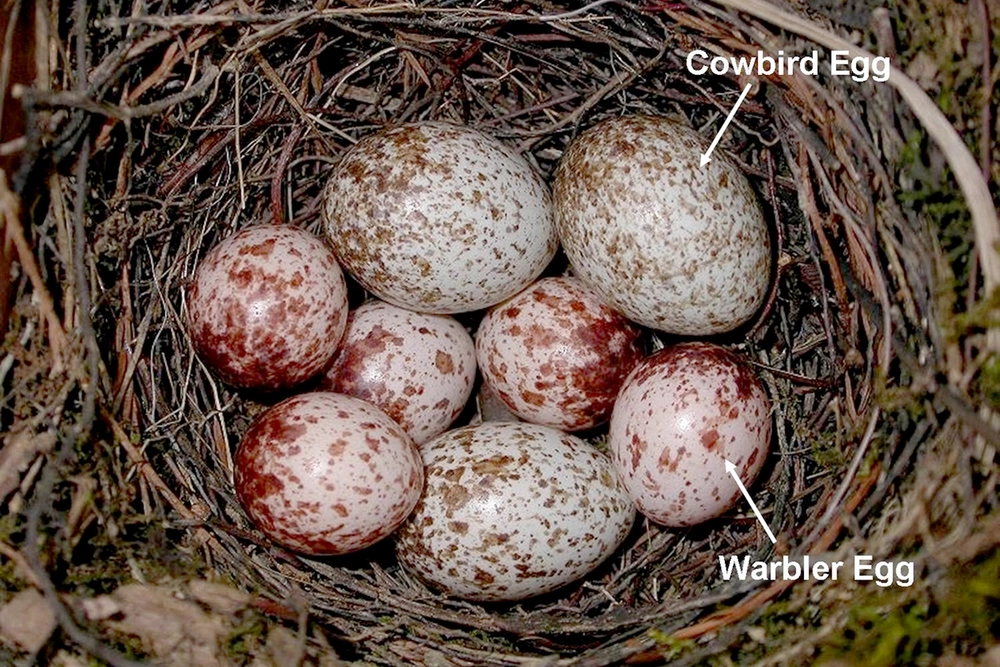
The new findings appear in the Journal of Experimental Biology.
Take cowbirds, for example. Their eggs look nothing like the host birds’ eggs, “yet most of their hosts do not reject the parasite eggs,” said study co-author Mark Hauber, a professor of evolution, ecology and behavior at the U. of I. and a brood parasitism expert. “One explanation is that the cowbird eggshell is too thick and strong for a small host’s beak to pierce.”
To determine whether the difficulty of piercing a brood parasite’s egg played a role in whether the host bird tried to eject it, Daniel Clark, an undergraduate student working in Hauber’s laboratory, teamed up with another professor in the same department, Philip Anderson, an expert in the biomechanics of piercing, slashing and stabbing. Anderson has previously studied the characteristics that contribute to the cutting and crushing ability of teeth and the piercing power of viper fangs and cactus spines.
The team used chicken eggs in the experiments because collecting and destroying wild bird eggs would be ethically problematic and difficult to standardize. The researchers wanted to determine which elements influenced an egg’s ability to withstand being pierced.
“The factors we specifically looked at in the paper were the presence of a nest, the sharpness of the bird’s beak and the speed at which it struck the egg,” Clark said.